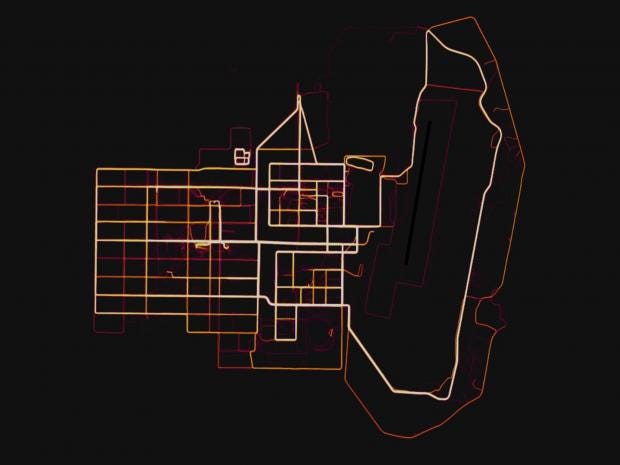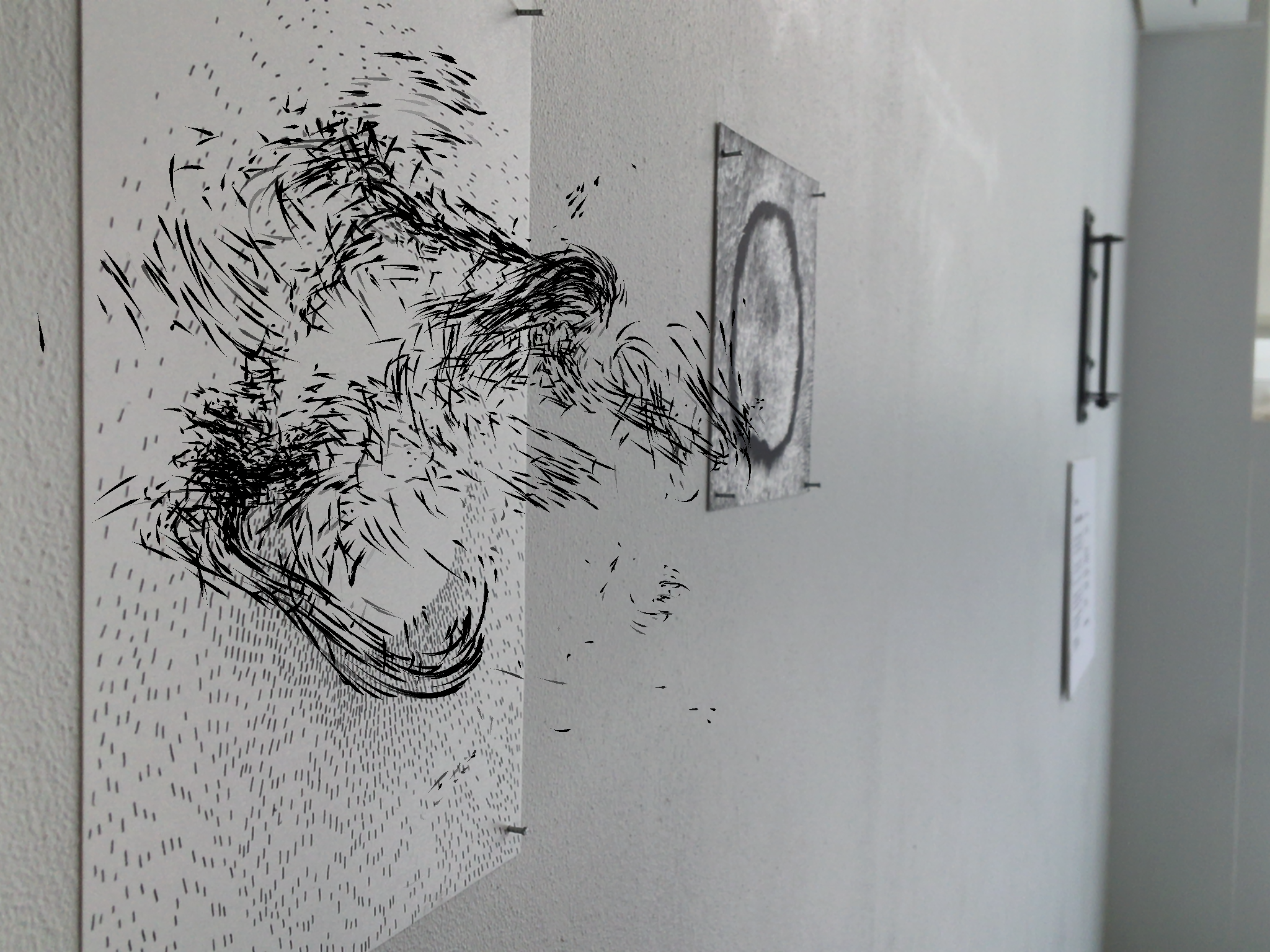Wednesday, January 31, 2018
Super ... Blood ... Blue Moon TONIGHT
The pre-dawn hours of January 31 will play host to an incredibly rare celestial convergence -- a "super blue blood moon." A "supermoon" is when a full moon occurs at the same time as its perigee, the closest point of the moon's orbit with Earth. The result: the moon appears larger than normal and NASA is predicting this one will be 14% brighter than usual. Chances are you have used the phrase "once in a blue moon" -- so now you know where it came from. Although it does not have a scientific definition, a "blood moon" occurs during a lunar eclipse when faint red sunbeams peek out around the edges of the Earth, giving it a reddish, copper color.
Eager stargazers living in North America, Alaska or Hawaii will be able to see the eclipse before sunrise on Wednesday, according to NASA. For those in the Middle East, Asia, eastern Russia, Australia and New Zealand, the "super blue blood moon" will be visible during moonrise on the evening of January 31. As long as the weather doesn't try to ruin things, observers in Alaska, Australia, eastern Asia and Hawaii will be experience the whole phenomenon from start to finish. For those living in the US, NASA says the best spots to watch the entire celestial show will be in California and western Canada.
Click here to watch the video. Wanna watch a funny SNL skit about Amazon Echo?
Credits:
https://www.cnn.com/2018/01/26/world/super-blue-blood-moon-guide-2018-intl/index.html
Monday, January 29, 2018
Strava Fitness App Threatens Military Security
A fitness tracking app called Strava that posted a map with potentially sensitive information about its users is sparking concerns over how similar services protect personal data— and raising questions about what users can do to protect themselves. Strava is among several apps and devices like Fitbit and Garmin that are part of the surging fitness tracker market. In most cases, the apps or devices keep tabs on basic health information such as steps taken, heart rate, or sleep.
Strava, which describes itself as a "social network for those who strive," works with most phones and GPS-enabled fitness watches. Since 2015, Strava has published a global heat map detailing the activity of its 27 million global users, based on their uploaded GPS data. The heatmaps let users find new exercise routes or discover the most popular in new locations. They also may be giving away military secrets. Security experts over the weekend questioned whether the user-generated map could not only show the locations of military bases, but specific routes most heavily traveled as military personnel unintentionally shared their jogging paths and other routes. Strava's own website, noted The Guardian, allowed users to find, via a leaderboard of competing runners, the names of service members who had raced one potential stretch outside an Afghan military base.
Click here for the video.
https://www.cnn.com/2018/01/28/politics/strava-military-bases-location/index.html
Sunday, January 28, 2018
By the time Trevor Hirschi decided to make a fidget spinner, the market was already saturated with $2 plastic devices that covered the shelves of toy stores and bodegas. So Hirschi, a machine tool technology instructor at Bridgerland Technical College and men's jewelry designer, got to work on something a little more exciting. fter shuffling through a couple different concepts, he settled on an airplane propellor. He'd kept a World War II airplane model in his room as a child that would later inspire his first fidget spinner, the TiSpin Prop. To make it, he assembled a 3-D model and used a computer numeric control machine to carve grade 5 titanium into the shape of a propellor. That machine runs at up to 30,000 rotations per minute, which Hirschi says is necessary to create precise blades for his propellers. But the cost is $425.
Most fidget spinners, which were initially marketed as a remedy for conditions like anxiety and ADHD, share the same basic anatomy: They have a three-knob design with a center piece that houses the spinner's bearings. You can find fidget spinners in different materials and colors; some even pack some flashing LED lights, or come with Bluetooth connectivity, but you'll mostly get the same experience—a cheap, accessible way to keep your hands busy. It’s also not the only “luxury” fidget spinner on the market. Take the 9 Gear Fidget Spinner from Real Gear Spinners, which retails for $600. It's a wild contraption that packs nine stainless steel gears and 52 total parts into a brass casing that creates something of a blend between a children's toy and steampunk contraption for your pocket.
Credits:
https://www.wired.com/story/the-whirl-is-not-enough-hundred-dollar-fidget-spinners/
Friday, January 26, 2018
Augmented Reality Artwork
BurgerKing's attempt to explain Net Neutrality
It’s just a few stones sitting on paper, rocks that look like they’ve been pulled from the nearest river and placed on a sheet of A9. But suddenly a lilliputian shadow appears, skipping across each stone as if it’s a boulder peaking out of a creek. The scene is just one of many strange and beautiful moments from Mirages & Miracles, an installation at France’s Scène Nationale Albi that runs through April 8th. Described as “a delicate coincidence between the virtual and the material,” the art exhibit is filled with sculpture and drawings that, when viewed through an augmented reality headset (we assume the Microsoft Hololens), blossom with an animated layer of media. The show was conceptualized by Claire Bardainne and Adrien Mondot, but it took a considerable team of digital and analog creators to bring it to life.
Why are these pieces so fresh in an industry overflowing with AR gimmicks? I can’t help but wonder if it’s the mix of organic materials–rocks, hair, and even inks–and the pixels themselves. We’re used to seeing AR pop up from a QR code. Alternatively, we’ve seen AR that can annotate objects in our environment, like a projector that casts a digital interface onto your kitchen table from above. But in Mirages & Miracles, it’s handmade art that comes to life. And so it feels bespoke rather than mass produced and digitized.
Click here for a video
Credits:
https://www.vrroom.buzz/vr-news/immersive-arts/augmented-reality-will-change-art-forever
Tuesday, January 23, 2018
Care Coach: Virtual Care for the Elderly
Patricia Richards, who is 64 years old and lives in Salem, Massachusetts, looks forward to her daily chats with her cat Bella. “I love Bella very, very much. She’s helpful ... she does a lot of things for me and I‘m so happy she’s in my house,” said Richards. Except Bella isn’t like most animals. As well as being able to talk, Bella checks if Patricia has taken her medication, plays the rock ‘n’ roll music she likes and reassures her when she is feeling anxious. Because Bella is a digital pet that exists on a tablet. She was created by Care Coach, a social enterprise that is competing with traditional models of care for the elderly in terms of cost, flexibility and resources. As companies providing state-funded care work to deliver services with sometimes dwindling finances, technology is offering a way to balance challenging budgets.
In the United States, advances in healthcare and a public better informed about healthy lifestyles has lead to an increasingly aging population. One in five of the nation’s population will be 65 or older by 2030, according to a 2014 government report. Richards’ welfare is managed by healthcare organization Element Care, which has engaged Care Coach to provide the pets. Element is now looking to increase the 15 current users because of the benefits that have resulted. Not only has Richards’ wellbeing improved but the company has saved money on the cost of her care, it says. She was selected for the digital pet because of repeated visits to the hospital while suffering anxiety and a shortage of breath related to smoking.
Credits:
http://www.themalaymailonline.com/tech-gadgets/article/meet-bella-a-digital-pet-caring-for-the-elderly-with-purrs-and-companionshi#WulQpsOPOAs3UbE9.97
Monday, January 22, 2018
Amazon Go! A Store Without Checkout
Crowds of tech aficionados, news crews and the simply curious turned out for the public opening of Amazon’s checkout-free convenience store Monday, giving a generally non-descript sidewalk the air of an Apple store the day a new iPhone comes out. "This is the future of grocery shopping. It's exciting to see the technology in action," said Yuval Fleming, who was so eager to try it out that he happily stood in a pre-dawn line to be one of the first to enter the store. The space is the size of a regular convenience store, though with a high-end assortment of foods. They include chilled beverages, sweets, snacks, ready-made salads and sandwiches, frozen foods and a wall of meal kits for dinners. The foods sits on shelves full of hidden sensors that note when an item's been removed or when it's been put back. Hundreds of cameras, painted matte black to blend in with the ceiling, capture movement.
Amazon Go shoppers need to have an Amazon account and to put the Amazon Go app on their phones. They scan the app on the electronic readers at the entrance turnstiles, then walk in and grab whatever they want. They can stick their purchases in their pockets, a bag or a pack — Amazon's technology knows what they've taken and charges their account. There are no checkout lines. The store opened to Amazon staff a year ago but only now to the public, with fascination mingling with worries about future jobs lost to automation and the tide of cool-but-expensive technology that highlights the growing divide between haves and have-nots. Critics note that shopping at the store requires a smart phone, a credit card or electronic payment system linked to an Amazon account, and that the shop carries items mostly aimed at a wealthy clientele who can afford to choose organic and locally-sourced items.
Credits:
https://www.usatoday.com/story/tech/2018/01/22/amazon-go-lines-form-seattle-try-checkout-free-shopping/1053592001/
Sunday, January 21, 2018
Sophia, the robot
Sophia cracks jokes, frowns, smiles, blinks and responds to complex questions. This month she has made strides with her first tentative steps. The robot has stunned the world since her creation in 2015, appearing on chat shows and at technology conferences and wowing audiences with her wit and lifelike facial expressions. Ben Goertzel, chief scientist at Hanson Robotics in Hong Kong, now says he wants to give Sophia and other robots “intelligence at the human level and beyond”.
Technology allows her face to move, apparently with expression. Cameras are embedded in her eyes and her “brain” processes speech, recognises faces and forms sentences while controlling her facial movements and body language. Her creator, David Hanson, a sculptor-turned-robotics scientist, and his team seem determined to bring her to life, or at least give that impression. On her website, Sophia describes herself as “a real, live electronic girl”. Dr Hanson created a nanotech material he calls frubber to put over Sophia’s frame as flesh. She is said to be capable of simulating more than 60 facial expressions. He made his robot as human-like as possible to alleviate fears about artificial intelligence and automation.
Click here for a video.
Credits:
https://www.theverge.com/2018/1/18/16904742/sophia-the-robot-ai-real-fake-yann-lecun-criticism
Technology allows her face to move, apparently with expression. Cameras are embedded in her eyes and her “brain” processes speech, recognises faces and forms sentences while controlling her facial movements and body language. Her creator, David Hanson, a sculptor-turned-robotics scientist, and his team seem determined to bring her to life, or at least give that impression. On her website, Sophia describes herself as “a real, live electronic girl”. Dr Hanson created a nanotech material he calls frubber to put over Sophia’s frame as flesh. She is said to be capable of simulating more than 60 facial expressions. He made his robot as human-like as possible to alleviate fears about artificial intelligence and automation.
Click here for a video.
Credits:
https://www.theverge.com/2018/1/18/16904742/sophia-the-robot-ai-real-fake-yann-lecun-criticism
Thursday, January 18, 2018
NASA Releases Earths Temps for 2017
The planet continued its dramatic warming in 2017, federal scientists reported Thursday, logging one of its hottest years on record even as the warming influence of a recent El Niño ceased. The extraordinary heat dovetailed with a year of climate extremes in which residents in places like California didn’t need data sets to observe the floods and fire that are expected to become only more common as the earth gets hotter.
“We can just look back to the last year” to see the dangers of climate change, said Rachel Licker, senior climate scientist at the Union of Concerned Scientists, which advocates for actions to counter global warming. “These kinds of events could increase in frequency and that’s certainly cause for alarm in the West.” NASA reported Thursday that 2017 was the second warmest year in 138 years of record-keeping, following only 2016. The National Oceanic and Atmospheric Administration reported that 2017 was the third warmest year, trailing 2015 and 2016. The discrepancy resulted from using different data sources.
Credits:
http://m.sfgate.com/nation/article/NASA-2017-was-second-hottest-year-on-record-12507829.php#photo-14904437
Tuesday, January 16, 2018
Is Your Portrait Hanging in an Art Gallery?
The No. 1 free app in the country gives you both the chance to appreciate some fine art and have a laugh while you’re doing it. What more could you want? The Google Arts & Culture app is the latest viral internet craze that is popping up all over social media as people compare photos of themselves to doppelganger portraits from museums and galleries all over the world.
Google Arts & Culture is a project by the tech giant which collaborates with more than 1,200 international museums, galleries and institutions from 70 countries to make their exhibits available online for all to see. It offers virtual reality experiences, an art recognizer and other content like virtual tours of galleries across the globe. It launched back in 2015, but the “portrait yourself” feature was added in December. “Take a selfie and discover if your portrait is in a museum,” the app’s description says of its “Is your portrait in a museum?” project.
Hawaii Issues False Missle Warning
How did it happen? Hawaii's Emergency Management Agency provided a bit more detail Sunday on what went wrong. The mishap took place during a routine drill run after a shift change, Vern Miyagi, the agency's administrator, said. During the drill, an officer in the emergency operation center mistakenly selected an incorrect "template," which shows what message is going to be sent, Miyagi said.
The template that the officer inadvertently selected was prepared to send the message to the public. The officer was supposed to have chosen a template that would only be sent internally. After the template is selected, Miyagi said, a note appears on the computer, asking the officer to confirm that they want to send the message. The officer responsible accidentally clicked yes, Miyagi said. At that point, the message -- "BALLISTIC MISSILE THREAT INBOUND TO HAWAII. SEEK IMMEDIATE SHELTER. THIS IS NOT A DRILL" -- was sent to Hawaii residents and vacationers. It also went out to televisions and radios.
Click here for the video.
Credits:
http://www.cnn.com/2018/01/14/us/hawaii-false-alarm-explanation/index.html
The template that the officer inadvertently selected was prepared to send the message to the public. The officer was supposed to have chosen a template that would only be sent internally. After the template is selected, Miyagi said, a note appears on the computer, asking the officer to confirm that they want to send the message. The officer responsible accidentally clicked yes, Miyagi said. At that point, the message -- "BALLISTIC MISSILE THREAT INBOUND TO HAWAII. SEEK IMMEDIATE SHELTER. THIS IS NOT A DRILL" -- was sent to Hawaii residents and vacationers. It also went out to televisions and radios.
Click here for the video.
Credits:
http://www.cnn.com/2018/01/14/us/hawaii-false-alarm-explanation/index.html
Monday, January 8, 2018
A Glove To Help Paralyzed People Grab
A spinal cord injury can have a lasting effect on the quality of the life you're able to lead. Depending on the severity of damage, symptoms can include pain, numbness or even paralysis, rendering everyday tasks nearly impossible. But a new robotic glove called the NeoMano hopes to help people who suffer from spinal cord injuries regain use of their hand. Neofect, a Korean company known for rehabilitation tools such as the Rapael Smart Board and the Rapael Smart Glove, showed off a prototype of the NeoMano here at CES. It's made of leather and looks a bit like an archery glove that covers just the thumb, index and middle finger.
It has titanium wires that can move those three fingers to perform tasks such as picking up a glass, holding a toothbrush or gripping a door knob. The NeoMano has a controller with two settings: grip, which steadily curls your fingers around an object, and release, which extends the fingers back to a resting position. After the popularity of the Rapael Smart Glove, Neofect received interest from people with hand paralysis. Since the Smart Glove was built for stroke patients, the company decided to create an entirely new glove specifically for people with spinal cord injuries.
Credits:
https://www.cnet.com/news/neomano-robotic-glove-helps-paralyzed-hands-move-again/
It has titanium wires that can move those three fingers to perform tasks such as picking up a glass, holding a toothbrush or gripping a door knob. The NeoMano has a controller with two settings: grip, which steadily curls your fingers around an object, and release, which extends the fingers back to a resting position. After the popularity of the Rapael Smart Glove, Neofect received interest from people with hand paralysis. Since the Smart Glove was built for stroke patients, the company decided to create an entirely new glove specifically for people with spinal cord injuries.
Credits:
https://www.cnet.com/news/neomano-robotic-glove-helps-paralyzed-hands-move-again/
Sunday, January 7, 2018
NASA's ToDo List for 2018
Everyone makes New Year's resolutions, but it's usually something like "Go to the gym" or "buy a life-size Yoda statue." NASA, on the other hand, is literally aiming for the stars. They've pulled off some incredible stuff this year, from identifying a truckload of new exoplanets to announcing the upcoming 'space gateway,' but 2018 has even more slated. Luckily, NASA has created a short video to bring us up to speed.
NASA is turning 60 in 2018 and the agency is looking forward to launching a slew of important missions in the coming year, including one to "touch" the Sun. NASA's Parker Solar Probe is scheduled for launch in 2018 to explore the Sun's outer atmosphere. The Origins, Spectral Interpretation, Resource Identification, Security-Regolith Explorer (OSIRIS-REx) spacecraft will travel to a near-Earth asteroid, called Bennu (formerly 1999 RQ36), and bring at least a 2.1-ounce sample back to Earth for study. The mission will help scientists investigate how planets formed and how life began, as well as improve our understanding of asteroids that could impact Earth.
Credits:
https://scitechdaily.com/nasas-2018-to-do-list/
Subscribe to:
Posts (Atom)






